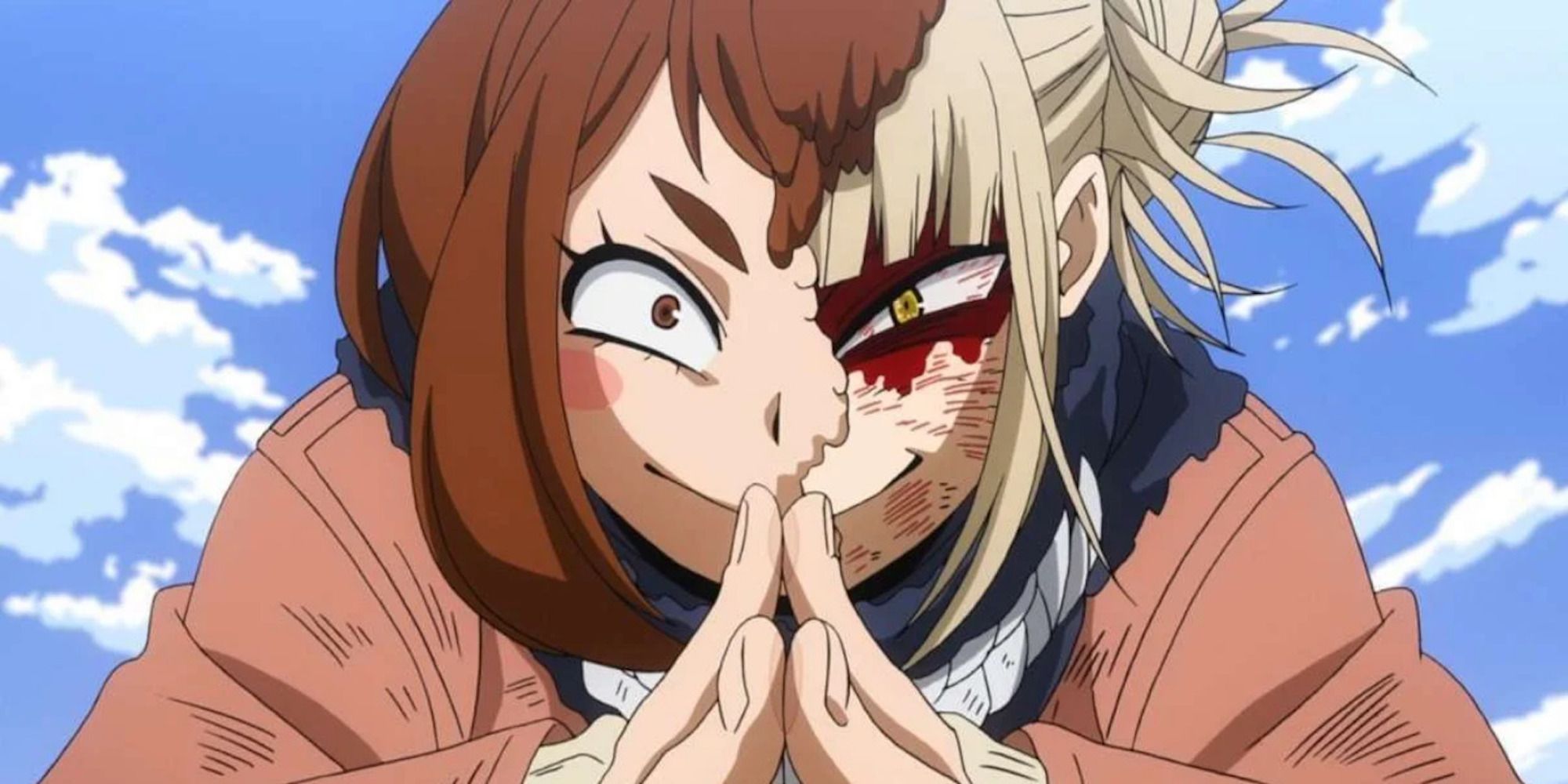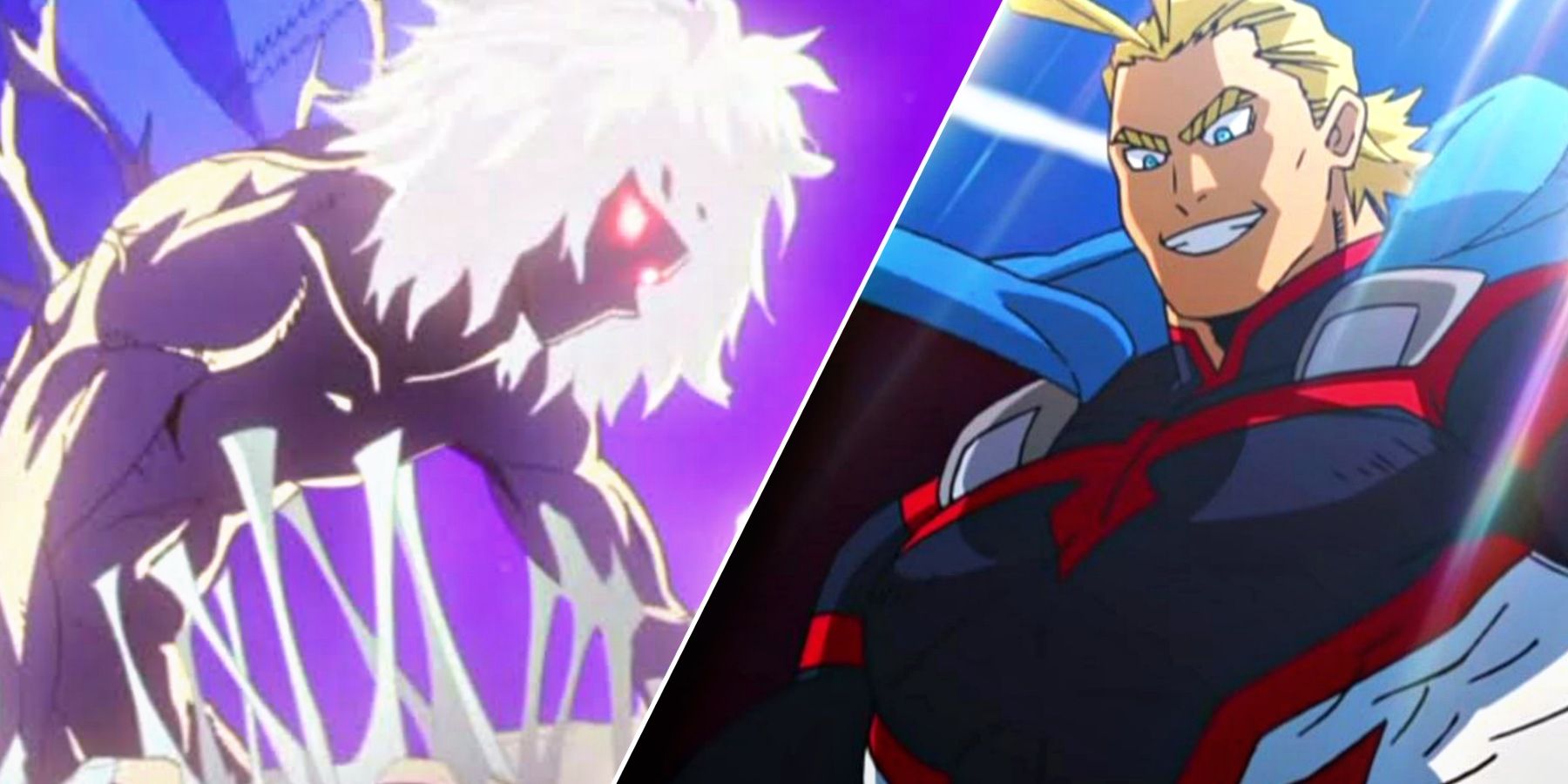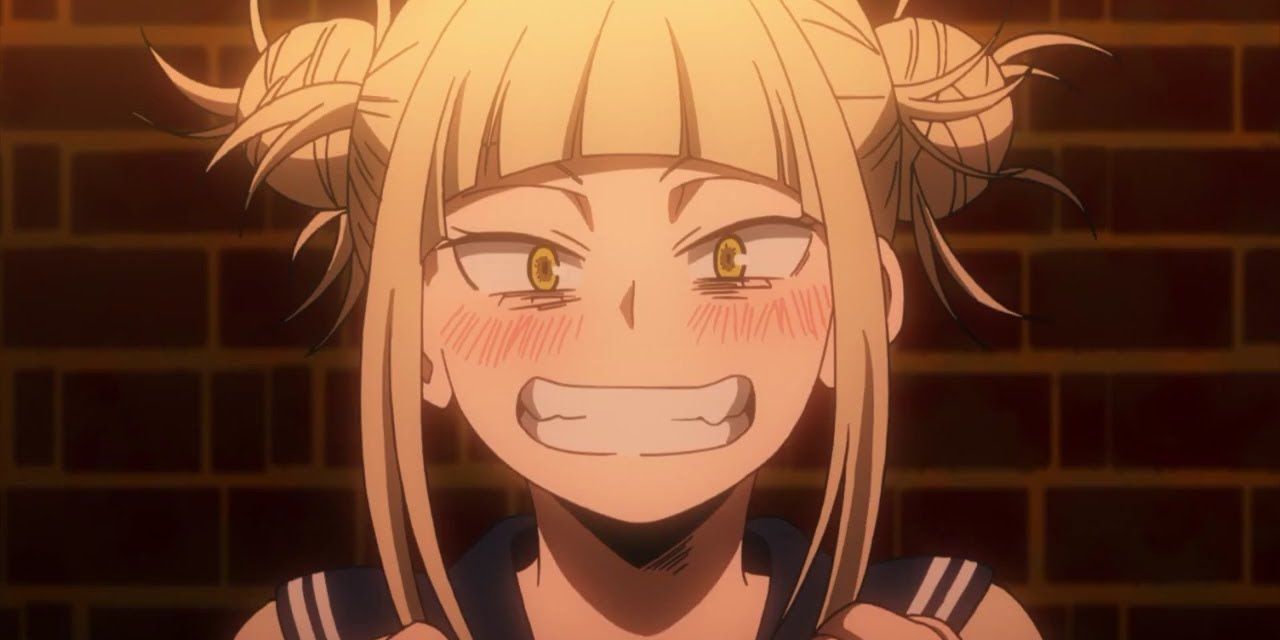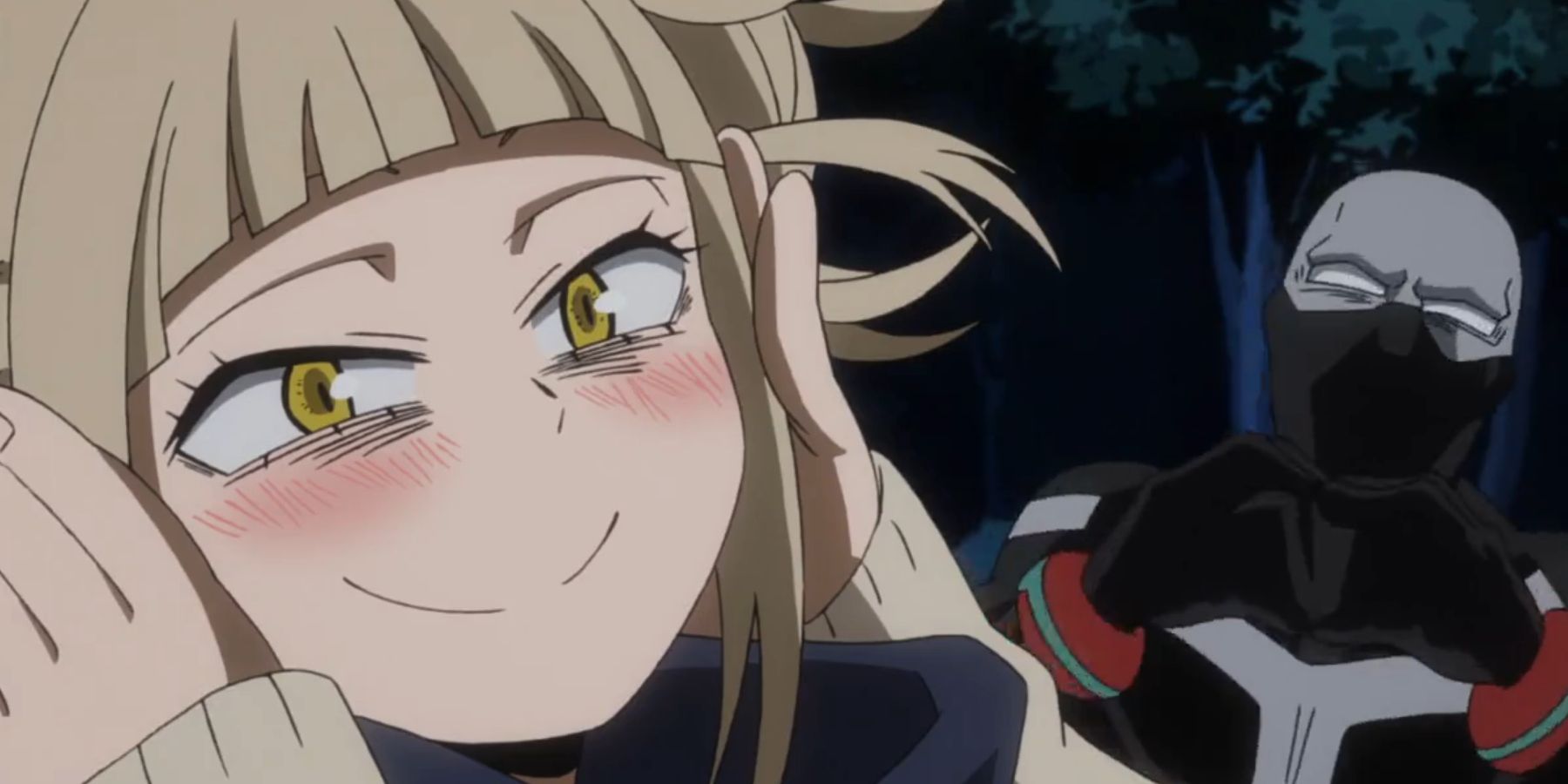Pseudo names and monikers are one of the most defining features of the superhero genre, with most stories from Batman to Ms.Marvel making use of them. My Hero Academia is no different, but why is it that one of its most prominent villains forgoes the classic naming convention?
Since her first main appearance in My Hero Academia’s forest training camp arc, Himiko Toga has been one of the most popular characters in the series, often ranking high on character popularity polls. Unlike the rest of her villain comrades though, she doesn’t operate under a villain name. Why is that?
Why Heroes and Villains Have Names
To understand Toga’s choice to forgo a name, we need to know why other characters use them. MHA actually gives an explanation on the hero side of things when class 1A chose their hero names. Their teacher and pro hero Midnight emphasizes that their hero names must represent who they are and how they want to be viewed by the world. Hence, why Bakugo and Ashido have their original hero names “Lord Explosion Murder” and “Alien Queen” rejected for being too unsavory or long. “Red Riot”, “Uravity”, or even “Deku” are accepted as names because they fulfill the purpose of representing the heroes and what they’re about.
The same idea carries for the villains as well. While we never see most of the villains’ reasons for choosing the names they do, we can easily assume why they did. “All for One” as a name represents his desire for supremacy and his selfish worldview. “Mr.Compress” as a name fits with his magician aesthetic and hints at his compression quirk. Villain names also serve the double purpose of disguising a criminal’s real identity in order to make them harder to locate and apprehend. It’s something criminals in real life tend to do as well.
What's Different About Toga?
So, shouldn’t Toga also have chosen a name that best represented her? Well, the thing is, maybe she already did. Toga is a character who is drawn to villainy by a desire to be herself. She grew up being ostracized by her parents and her peers because of her quirk and obsessive personality. To her, the name that most represents who she is and what she wants is her own name, because that’s who she wants to be; herself.
Other My Hero Academia characters also prefer to use their real names. Shoto Todoroki uses “Shoto” as his hero name, as he doesn’t really have a big vision for himself as a hero. He’s a much simpler person who just wants to do his job well. Tomura Shigaraki doesn’t have a villain name, but in a sense “Shigaraki” is his villain name, because it represents his view of All for One as his new family, as “Shigaraki” is All for One’s last name.
Why This Works
It’s actually quite fitting then, that Toga never gets a traditional villain name. Using her real name makes her easily identifiable, and leaves her linked to her old life, but she isn’t really someone who minds that. Especially when it also allows her to form stronger new connections; the thing she wants the most. When she meets Uraraka and Tsuyu in the forest camp, she explicitly asks to be called by her first name, and wants to call them by theirs as well. In Japan, using someone’s first name is reserved for family and close friends, so this is her attempt to speed up the process of becoming friends with them.
For her, using her real name lets the objects of her affection get to know her directly. Deku, Uraraka and Twice particularly are her biggest obsessions/friends, and having them call her by her first name, makes her feel closer to them. Even more so thanks to the cultural context of how Japan handles names.




